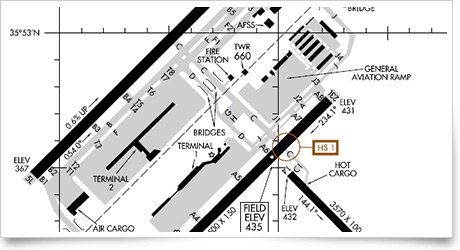Custom content for the Sept. 07, 2012, issue of 'AOPA ePilot' newsletter
| The following stories from the Sept. 07, 2012, edition of AOPA ePilot were provided to AOPA members who expressed an interest in the particular subject areas. Any AOPA member can receive information tailored to their areas of interest by updating their preferences online |
training tipsTwo runways, same numbers
One airport layout that is important to understand because of its unique operating considerations (including a new twist for your communications) is an airport with parallel runways. Because the runway numbers are identical, it becomes necessary to make clear whether you are taking off or landing, for example, on Runway 19L (left) or Runway 19R (right). Be sure to include that information in your radio transmissions.
Chapter 4-3-3 of the Aeronautical Information Manual presents and illustrates general traffic-pattern operating procedures for airports with parallel runways. Note the importance of avoiding a traffic pattern that might penetrate the approach or departure path of the other runway.
With Runways 05L-23R and 05R-23L separated by airport terminal buildings, Raleigh-Durham International Airport is an example of a major airport with parallel runways.
A general aviation airport can have a parallel-runway layout, too—such as this one in Manassas, Va., with 5,700-foot-long and 3,704-foot-long runways.
Check details of airport operations carefully before you head for a parallel-runway destination. For example, it is right traffic for Runway 01R-19L at the recently opened Brunswick Executive Airport in Maine, a former naval air station. A careful reading of the airport's listing in the airport/facility directory contains this message about the other parallel runway: “Rwy 01L–19R CLOSED indef.” For added situational awareness, print out a copy of your destination airport's taxiway diagram and carry it on your kneeboard.
Busy airports may have arrivals and departures taking place simultaneously on parallel runways. If you are on final approach to Runway 23R, be sure to stay situationally aware of operations on Runway 23L. Is there a possible wake turbulence hazard?
An airport can have more than two parallel runways, in which case the letter C (center) follows the runway number, such as Runway 17C-35C at Dallas/Fort Worth International Airport.
It may be some time before you come face to face with the need to operate at an airport with parallel runways. Getting some early practice learning their unique requirements will help you be ready when the time comes. training productsCloudAhoy app lets you debrief each flightWondering how your ground track looks on a turn around a point, or if that ILS approach was as flawless as it felt in the air? A free app called CloudAhoy collects flight data as you fly, and then lets you debrief the flight on the ground. You’ll need to create an account with CloudAhoy, and then download the app, currently supported by iOS. (You can use the app on up to four devices with the same account, and you’ll also need an external GPS if your device doesn’t have one.) Start the app before you start the engine; allow it to transmit the data to the CloudAhoy server after the flight. Then log in to your account and the flight is ready for your review. For more information, see the website.
Note: Products listed have not been evaluated by ePilot editors unless otherwise noted. AOPA assumes no responsibility for products or services listed or for claims or actions by manufacturers or vendors. final examQuestion: What is the meaning of the magenta-colored “T” over “SFC” near Oakland, Calif., on the San Francisco Sectional?
Answer: This is information on Class C altitudes. The top number (or letter) indicates the ceiling of the Class C airspace. The bottom number (or letters) indicates the floor of the airspace. In this particular case, “T” indicates that the ceiling is to, but not including the floor of Class B airspace. The “SFC” indicates that this airspace goes to the surface, and the “15” indicates that it goes down to 1,500 feet msl. For more information on chart symbology, refer to the Aeronautical Chart User’s Guide, available for free download.
Got a question for our technical services staff? Email [email protected] or call the Pilot Information Center, 800/872-2672. Don’t forget the online archive of “Final Exam” questions and answers, searchable by keyword or topic. |
 When a student pilot ventures forth on those first cross-country flights, it quickly becomes obvious that all those airports out there present an endless variety of runway layouts, lengths, widths, and procedures for arriving and departing. From obstacles on final to nonstandard traffic pattern altitudes or right-hand traffic, your destination airports broaden your terminal-area experience and enhance your general operating knowledge and confidence.
When a student pilot ventures forth on those first cross-country flights, it quickly becomes obvious that all those airports out there present an endless variety of runway layouts, lengths, widths, and procedures for arriving and departing. From obstacles on final to nonstandard traffic pattern altitudes or right-hand traffic, your destination airports broaden your terminal-area experience and enhance your general operating knowledge and confidence.

